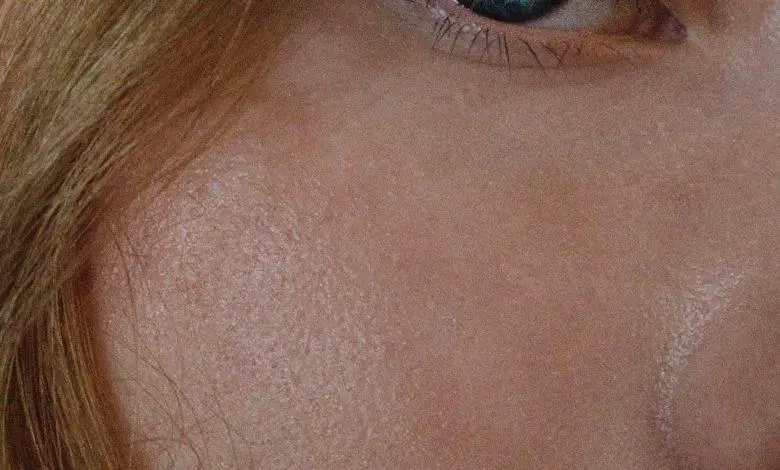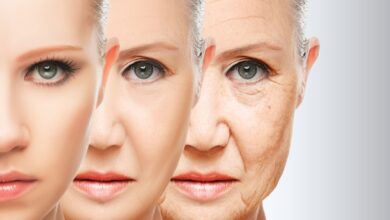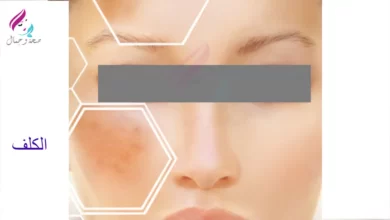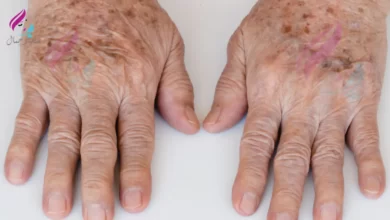
مقدمة عن البشرة الدهنية أو الزيتية أسبابها و العناية بها
أسئلة تراود الكثير من النساء صاحبات البشرة الدهنية أو الزيتية.
و عادة ما يصادف أولئك.. الكثير من المشاكل كالبثور وحب الشباب واثاره و البقع البنية والكلف إلخ، مما يضطرهم للبحث عن أفضل طرق العناية بهذا النوع من البشرة.
يفترض أنك قدد حددت نوع بشرتك و مدى دهنيتها, يمكن مراجعة مقالة ما هي أنواع البشرة و كيف تعرفين نوع بشرتك؟
للأسف استخدمت وصفات وطرق كثيرة دون ان تستطيع السيطرة على المشكلة بشكل واضح، إنما من الآن لا داعي للقلق، لأننا سوف نعرفك اليوم عن أفضل طرق العناية ب ( البشرة الدهنية )، لذا كوني معنا خطوة بخطوة وركزي جيدًا للسطور التالية والتي تشمل:
لكل قبل معرفة الأسرار وطرق العناية بها, هيا بنا نتعرف على اسباب دهنية أو زيتية البشرة.
الأسباب:
- العامل الوراثي يلعب دورًا رئيسًا في ذلك فعندما يكون الأب أو الأم يمتلكون بشرة دهنية فمن الممكن أن يصبح لديك ايضًا بشرة دهنية وراثه من الأبوين
- تعرضك المستمر للتوتر والعصبية سوف يساعد على إفراز الزيوت الطبيعية بكثرة ويزيد من مشكلة المسام الواسعة المفتوحة، بل سوف ينشر حب الشباب في الوجه بالكامل بشكل لا يمكن أن تتخيله، لذك حاولي الإبتعاد عن التوتر ما أمكن, وأخذ كل شيء بحكمة وهدوء، حتى تتمكني من السيطرة على الموقف وتحمي بشرتك من التعرض لآثار المشكلات الكثيرة التي تحدث بالبشرة الدهنية.
- سوء التغذية وعدم تناول الأطعمة الصحية يؤدي إلى البشرة الدهنية والحبوب، لذلك حتى تتمكني من علاج هذا النوع من البشرة, وحب الشباب, حاولي قدر المستطاع تناول مجموعة من الخضروات والفاكهة مثل ( الطماطم والخيار والسبانخ والجزر والبطاطا الحلوة وشرب الماء الكثير، لذا حاولي أن تشربي من 2 إلى 3 لتر ماء يومًا وأكثري من شرب الماء في الصباح ولا تنسي تناول عدد مناسب من المكملات الغذائية مثل أوميجا 3 والفيتامينات و مضادات الأكسدة، فهذا سوف يساعد على تبييض البشرة الدهنية كما سعمل على التقليل من زيتية البشرة.
- الجو والعوامل المناخية لها تأثير كبير على البشرة الدهنية، خصوصًا في الأجواء الحارة التي تزيد فيها إرتفاع درجة الحرارة فهذا يسبب التعرق الشديد للغاية، مما يفرز كمية كبيرة من الزيوت والدهون والبثور وبالتالي سيسبب حب الشباب، لذلك احرصي على غسل بشرتك بشكل يومى بغسول خاص بهذا النوع من البشرة، حتى تحمى بشرتك من مشاكلها.
علاج البشرة الدهنية للنساء
إذا نفذتي النصائح السابقة والتالية سوف تساعدين نفسك على تخطي تلك المشكلة بكل سهولة لتتمكني من علاج البشرة الدهنية وحب الشباب بأفضل شكل ممكن أو من الممكن أن تعالجيه بأسرع طرق ممكنة من خلال التقشير الكيميائي او علاج البشرة الدهنية بالاعشاب او ازالة مشاكل البشرة الدهنية بالليزر، فكل هذه الطرق سوف تعمل على إزالة الطبقة الجلدية المنتشر فيها مشاكل البشرة الدهنية وتقليل حجم الزيوت الطبيعية والمسام، مما تقلل من مشاكل البشرة الدهنية.
هذا و يسأل معظمكم هل يوجد طريقة تعمل على حل مشاكل البشرة الدهنية؟
نعم يوجد العديد من ماسكات العناية لهذا النوع من البشرة, و إليك ماسك رائع اثبت فعاليته المذهلة.
-
ماسك الشوفان و اللوز ل (البشرة الدهنية أو الزيتية):
يحتوي على الشوفان واللوز الذي يعتبر واحدًا من ضمن أفضل ماسكات البشرة الدهنية، لأنها يتكون من مكونات رائعة تعمل على علاج هذا النوع من البشرة وحب الشباب
إن أجمل ما يميزه أن طريقة تحضيره سهلة للغاية لا تحتاج منك وقت ولا مجهود كبير، فكل ما تحتاجينه هو :
- تحضير القليل من الشوفان واللوز ثم اطحني المكونات مع بعضهم البعض
- وضيفي ملعقة كبيرة من الماء الدافئ عليهم، حتى يصبح عجينة متماسكة
- ضعي الخليط على وجهك بحركات دائرية برفق واتركي لمدة 10 دقائق
- ثم اغسلي بالماء الفاتر وبعد ذلك امسحي بقطنة مبللة بماء الورد
يعمل هذا القناع على تهدئة التهابات البشرة وعلاج البثور واثار حب الشباب وتقشير هذا النوع من البشرة.
-
ماسك الجيلاتين و الليمون:
كل ما تحتاجي هو!
- ثلاث معالق من مسحوق الجيلاتين المستخدم في صنع الحلويات موجود عند العطار أو محل الحلويات
- نصف ليمونة.
- امزجي المكونات مع بعضها البعض.
- بعد ذلك ضعي ماسك البشرة الدهنيةعلى وجهك بظهر الملعقة، و افرديه (انشريه) جيدًا.
- اتركي الماسك إلى أن يجف ومن ثم اغسلي بشرتك بماء بارد.
جربي هذه الطريقة مرتين في الأسبوع لمدة شهر وسوف تنبهرين بالنتيجة، حيث يعمل هذا الماسك على تبييض البشرة الدهنية وتنظيفها بشكل عميق.
ما هو افضل غسول للبشرة الدهنية
1- Cetaphil يعمل هذا الغسول على تنظيف البشرة الدهنية
2- Neutrogena Oil Free Acne Face Wash يساعد هذا الغسول على تفتيح البشرة الدهنية والسيطرة على معظم مشاكلها بشكل فعال
3- Himalaya Purifying Neem Face Wash
4- Garnier Skin Naturals Fresh Deep Clean Face Wash Mint Extract :
يعمل هذا الغسول على تقشير البشرة الدهنية وتنظيفها بعمق، مما يجعل بشرتك تتنفس بشكل جيد
5- Saslic Foaming Face Wash
علاجها بالاعشاب:
استخدمى خل التفاح مخفف بالماء قبل النوم على بشرتك.
المقدار: ملعقة خل تفتح مع 4 او 5 ملاعق ماء.
يتم وضع القليل منه على قطنه ومسح البشرة بها.
رغم بساطته فهو رائع حقًا ويعمل على تنظيف البشرة بعمق والقضاء على حب الشباب وتضيق مسام البشرة.
يوجد العديد من الماسكات الأخرى ..الذي يدخل في تركيبها جيل الصبار الطبيعي فهو رائع حقًا في تبييض البشرة الدهنية وعلاج معظم مشاكلها بأسرع طريقة ممكنة.
شاركنا برأيك في التعليقات عن أفضل طرق العناية بالبشرة الدهنية التي تستخدمينها
من المقالات التي ينصح بها العناية بالبشرة و حمايتها من العوامل المؤثرة على صحتها .






